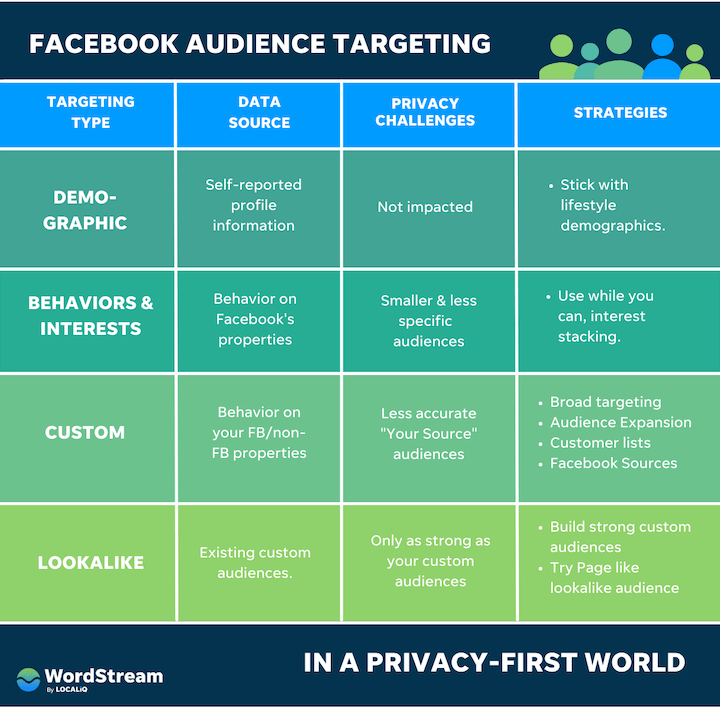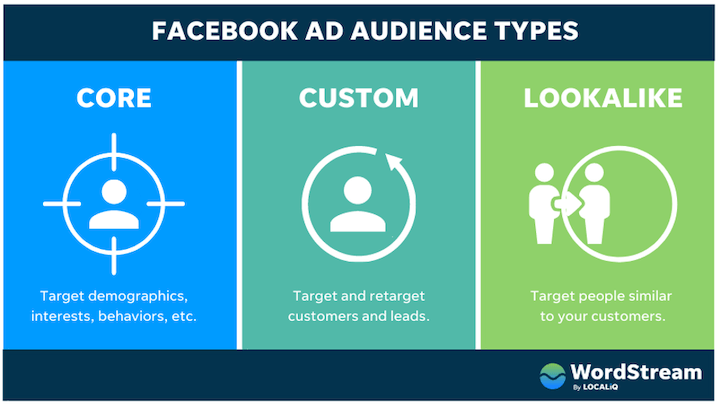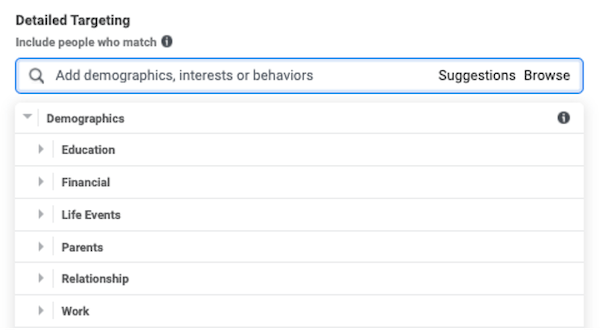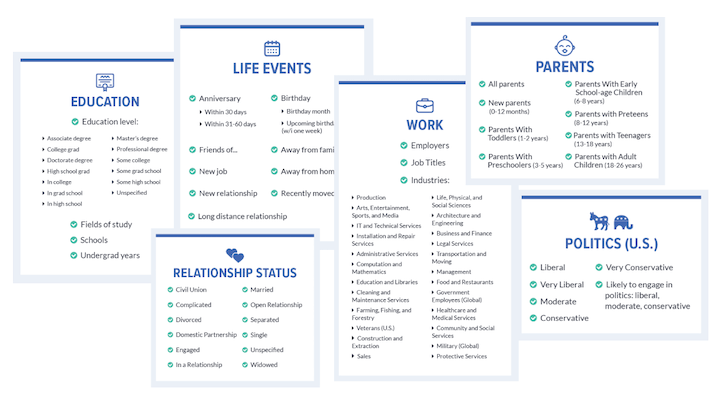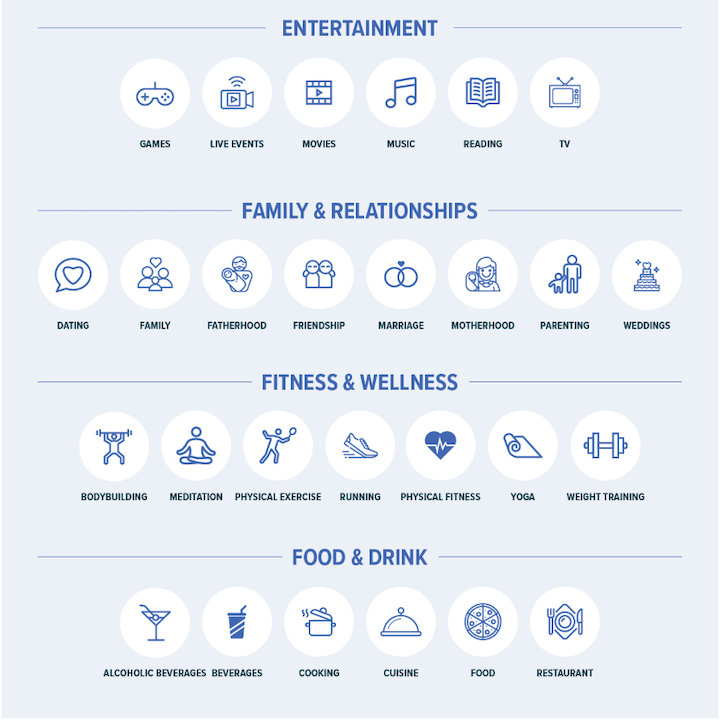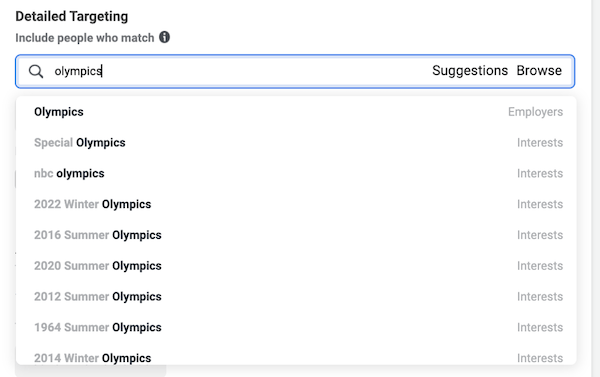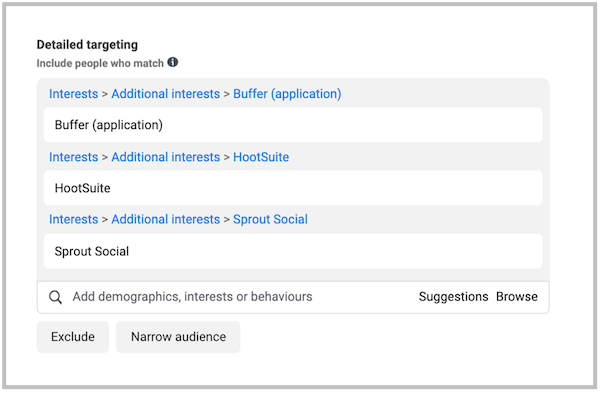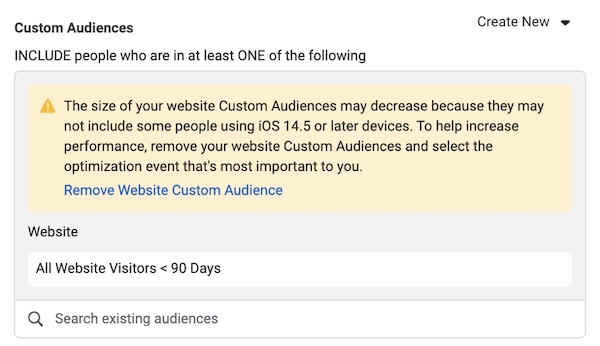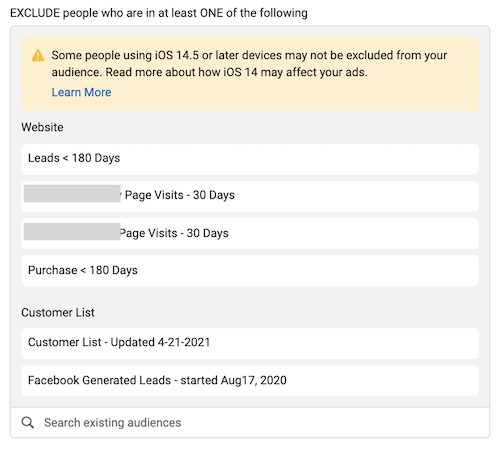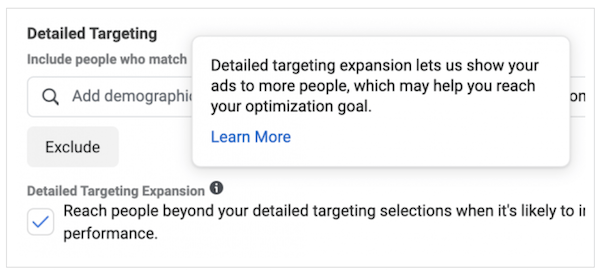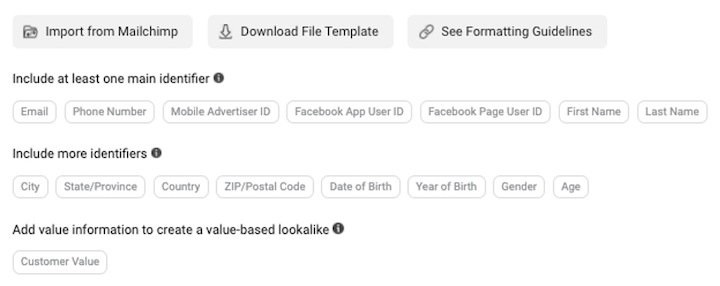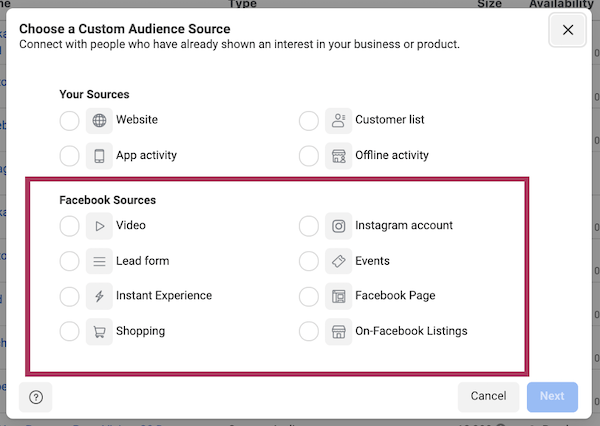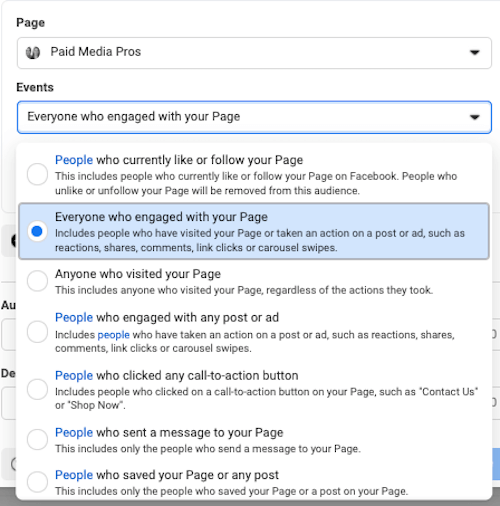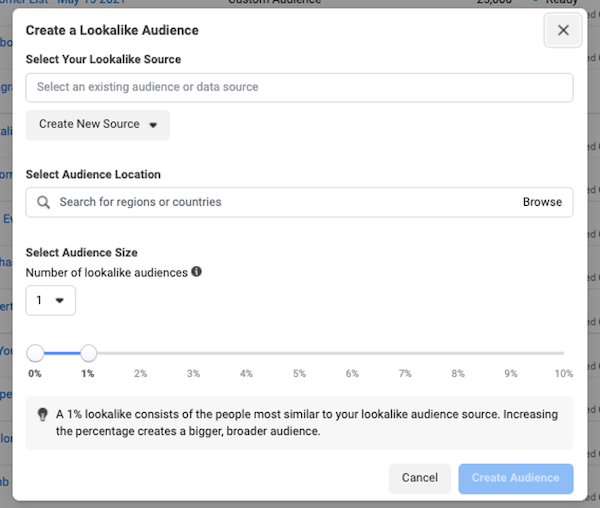Koje su mogućnosti Facebook oglasa za ciljanje publike u 2024
Facebook je već gotovo 10 godina izuzetno moćna platforma za oglašavanje. Tokom godina, opcije targetiranja postale su veoma precizne kako bi vam pomogle da bolje dosegnete potencijalne kupce.
Međutim, sa novim merama zaštite privatnosti—posebno ukidanjem kolačića treće strane i funkcijama privatnosti u Apple-ovom iOS-u 14 (i novijim verzijama)—sve se to menja. Ipak, postoje načini za efikasno oglašavanje na Facebooku. Potrebno je samo razumeti novi okvir i kako najbolje iskoristiti svaku vrstu publike.
Vrste ciljnih publika na Facebooku
Pre nego što pređemo na detalje, evo kratkog pregleda tri vrste ciljnih publika na Facebooku.
- Osnovne publike (Core audiences): Ovo je podrazumevana vrsta publike u Ads Manager-u gde možete ciljati prema lokaciji, demografiji, interesovanjima, ponašanju i konekcijama.
- Prilagođene publike (Custom audiences): Ove publike se kreiraju pomoću vaših sopstvenih podataka (kao što su posetioci vašeg sajta ili lista kupaca) i/ili podataka sa Facebook-a (kao što su ponašanja na platformi).
- Slične publike (Lookalike audiences): Facebook može kreirati publike koje su slične onima koje ste već kreirali ili na osnovu učitane liste
Demografsko targetiranje na Facebooku
Demografsko targetiranje na Facebooku predstavlja vrstu Osnovne publike i zasniva se na informacijama koje korisnici sami pružaju na svojim profilima.
Kako funkcioniše
Najosnovnija opcija demografskog targetiranja je prema uzrastu, lokaciji i polu.
Zatim postoji Detaljno ciljanje, koje uključuje nivo obrazovanja, finansijski ili bračni status, da li su roditelji ili ne, i još mnogo toga.
Izazovi privatnosti
Generalno, ovi podaci će ostati prilično stabilni, s obzirom na to da su samostalno prijavljeni od strane korisnika i verovatno neće biti pogođeni, osim ako ne dođe do novih interpretacija zakona o privatnosti.
Ciljajte demografiju životnog stila
Iako ove opcije deluju vrlo moćno — i mogu biti — naše iskustvo pokazuje da su efikasnije kada se usmere i primene na tipove podataka koji se najčešće dele na Facebooku.
Na primer, na Facebooku ljudi češće ažuriraju svoj profil kako bi podelili vesti o veridbi, o tome kako im deca napreduju ili da su kupili novu kuću. Njihov nivo obrazovanja i radno iskustvo verovatno neće biti ažurni ili tačni (za to je LinkedIn bolja platforma!).
Zbog toga su opcije ciljanja u ovom segmentu koje se više vezuju za nečiji lični život obično bolji izbor od onih koje se fokusiraju na profesionalne aspekte.
Ciljanje na osnovu ponašanja i interesovanja na Facebooku
Ovo je još jedan tip osnovne publike (Core audience). Možete ciljati ponašanja i interesovanja istovremeno sa demografskim podacima, ali su oni posebno izdvojeni jer su pod većim uticajem pitanja privatnosti.
Facebook može zaključiti informacije o korisnicima na osnovu podataka koje pružaju u svojim profilima na Facebooku, Instagramu i Messengeru, kao i na osnovu njihove interakcije sa sajtovima u okviru Facebook Audience Network-a.
Infographic Wordstream
Možete pronaći opcije za ciljanje na osnovu ponašanja i interesovanja pretraživanjem unapred definisanih lista na Facebooku ili jednostavno unosom pojmova u polje za pretragu Detaljnog ciljanja kako biste pronašli pojedinačne opcije ciljanja.
Ove opcije su izuzetno moćne. Na primer, možete ciljati korisnike koji su zainteresovani za finansije, ali ne samo finansije uopšteno. Možete segmentirati korisnike na osnovu interesovanja za teme poput kreditnih kartica, osiguranja ili hipoteka.
3. Izazovi privatnosti
U budućnosti, zbog gubitka signala usled ograničenja praćenja od strane trećih strana unutar Facebook mreže, biće teže za Facebook da kreira ove segmente sa istim nivoom specifičnosti.
Na primer, kada pretražujete "Olimpijske igre", prikazuje vam se mnogo različitih opcija za ciljanje interesovanja za različite godine, letnje ili zimske igre, NBC, itd.
Sužavanje opcija i strategija za ciljanje interesovanja
Baš kao i kod bilo kog drugog procesa segmentacije liste, lakše je kreirati mnoštvo nijansiranih grupa kada je početna lista velika. Međutim, ograničenja vezana za piksele trećih strana znače da će Facebook imati manju listu signala za kreiranje novih ciljnih grupa.
Na primer, ciljanje vezano za Olimpijske igre i dalje će postojati, ali umesto liste koja uključuje različite godine, nazive TV mreža i slične detalje, možda ćemo videti samo opcije poput "Letnje olimpijske igre" i "Zimske olimpijske igre," ili čak samo "Olimpijske igre."
Pokušajte sa stapanjem interesovanja
Kako publike postaju manje specifične, moglo bi imati više smisla ciljati više interesovanja unutar jednog seta oglasa.
Na primer, ako želite da ciljate marketinške stručnjake, umesto da kreirate poseban set oglasa za korisnike zainteresovane za Buffer, možete dodati i interesovanja za Hootsuite, Sprout Social, StreamYard, i slične alate u istu publiku.
Ova strategija povećava domet, dok i dalje ostaje relevantna za ciljanu nišu.
Ciljanje prilagođene publike na Facebooku
Oglašavanje nije samo u pronalaženju nove publike; jednako je važno ponovo angažovati one koji su već upoznati s vašim brendom.
Kako funkcioniše?
Prilagođene publike omogućavaju vam ponovno ciljanje korisnika koji su već bili u interakciji s vašim brendom putem dva izvora:
Vaši sopstveni podaci:
- Aktivnosti na sajtu ili aplikaciji
- Offline aktivnosti
- Liste kupaca
Facebookovi podaci:
- Korisnici koji su komunicirali s vašim Facebook resursima, kao što su:
- Video sadržaji
- Obrasci za prikupljanje podataka (lead forms)
- Instant Experiences
- Događaji (Events)
- Vaša poslovna stranica i još mnogo toga
Izazovi
Opcije ciljanja koje se oslanjaju na vaše izvore podataka najviše su pogođene promenama u praćenju koje trenutno doživljavamo. Možda ste primetili upozorenja koja ukazuju da vaša publika možda ne uključuje sve koji su posetili vaš sajt zbog gubitka podataka usled ograničenja praćenja.
Ovi izazovi su posebno izraženi nakon promena u politici privatnosti, poput ažuriranja iOS 14, koje ograničavaju praćenje korisnika putem kolačića i drugih tehnologija. Kao rezultat, preciznost i obim prilagođenih publika mogu biti smanjeni, što utiče na efikasnost kampanja usmerenih na ponovni angažman postojećih ili potencijalnih kupaca.
Da biste ublažili ove efekte, preporučuje se korišćenje alternativnih strategija ciljanja, kao što su šire definisane publike ili korišćenje podataka o angažovanju unutar samih Facebook platformi, gde je praćenje i dalje moguće. Takođe, redovno ažuriranje i održavanje vaših lista kupaca i drugih izvora podataka može pomoći u održavanju relevantnosti vaših prilagođenih publika.
Izazovi u isključivanju publike
Istovremeno, verovatno dobijate i poruku koja vas obaveštava da ne možete isključiti sve koje biste želeli iz svojih kampanja zbog—pogodili ste—gubitka podataka.
Ova ograničenja dodatno otežavaju precizno upravljanje publikom, jer smanjena dostupnost podataka znači da ne možete pouzdano isključiti korisnike koji su već konvertovali, posetili određene stranice ili obavili druge aktivnosti koje biste obično koristili kao kriterijume za isključivanje.
Za rešenje ovih problema, razmotrite sledeće:
- Fokusirajte se na interakcije unutar Facebook platformi (npr. posmatrajte korisnike koji su gledali video, popunili lead formu itd.).
- Koristite šire publike u kombinaciji s kontekstualnim oglašavanjem i relevantnim kreatorima sadržaja.
- Održavajte ažurirane liste e-pošte i drugih direktnih izvora podataka.
Dakle, ne samo da ne možete ponovo ciljati sve koji su posetili vaš sajt, već takođe ne možete isključiti sve koji su već obavili kupovinu — zbog ograničenja privatnosti.
Koristite široko ciljanje i proširenje publike
Za ciljanje na osnovu aktivnosti na sajtu i aplikaciji, Facebook preporučuje korišćenje širokog ciljanja i proširenja publike, i mi se slažemo sa tim pristupom.
Širenje interesovanja vaše publike daje Facebook algoritmu više prostora za rad.
Postavljanje lista kupaca
Liste kupaca su jedan od načina da se ublaže neki od gubitaka podataka, ali one nisu, niti su ikada bile, savršene. Liste kupaca omogućavaju vam da prenesete spisak imena korisnika, e-mail adresa, brojeva telefona i slično u oglasnu platformu radi povezivanja sa korisnicima u njenoj bazi podataka. Kada se korisnik poveže, dodaje se na vašu listu i postaje moguće ciljati ga.
Međutim, problem je što nisu svi korisnici u mogućnosti da budu povezani. Možda su vam dali nevažeću e-mail adresu ili jednostavno drugačiju od one koju koriste na Facebooku. Ili imaju više e-mail adresa, a Facebook nije svestan te povezanosti.
Bez obzira na uzrok, postavljanje lista kupaca može biti odličan način da nadoknadite gubitak korisnika koji su pratili kolačiće sa sajta, ali to neće biti potpuno rešenje.
Ponovno ciljanje posetilaca Facebook stranice
Opcija "Facebook stranica" u okviru izvora Facebook podataka predstavlja odličan način za kreiranje publike. Uz nju, možete kreirati publike korisnika koji su:
- Lajkovali ili zapratili vašu stranicu
- Bili u interakciji s vašom stranicom
- Posetili vašu stranicu
- Bili u interakciji s bilo kojom objavom ili oglasom
- Kliknuli na bilo koje dugme za poziv na akciju (CTA)
- Poslali poruku vašoj stranici
- Sačuvali vašu stranicu ili neku objavu
Zatim ih možete ciljati na isti način kao i posetioce vašeg sajta. Na primer:
- Ako su posetili vašu stranicu, ali nisu obavili kupovinu, ciljajte ih kampanjom kataloga proizvoda.
- Ako su često lajkovali vaš sadržaj, pošaljite im obrazac za prikupljanje podataka (lead gen form) kako bi preuzeli vodič.
To što se njihova aktivnost odvija na Facebooku, a ne na vašem sajtu, ne znači da ne treba iskoristiti njihovo ponašanje u vašu korist.
4. Ciljanje putem slične publike (Lookalike Audience)
Slične publike su jedna od neverovatno moćnih strategija za ciljanje oglasa na Facebooku.
Kako funkcioniše?
Umesto da se oslanjate na specifična ponašanja ili demografske podatke, slične publike vam omogućavaju da odaberete izvornu publiku (iz neke od postojećih publika ili izvora podataka). Facebook zatim analizira, kategorizuje i koristi tu publiku da pronađe korisnike koji se ponašaju slično korisnicima s te liste.
Na ovaj način, možete proširiti domet kampanje na korisnike slične vašim postojećim klijentima, dok i dalje ciljate relevantnu i potencijalno konvertujuću publiku.
Izazovi
Pošto su slične publike zasnovane na mašinskom učenju iz publika za ponovno ciljanje, gubici podataka će uticati i na njihovu efikasnost. Uspešnost sličnih publika zavisiće od kvaliteta izvornih publika koje kreirate kako bi Facebook mogao da ih koristi kao model.
Izbegavajte publike bazirane na sajtu
Efikasnost sličnih publika zavisiće od toga koliko dobro možete kreirati izvorne publike za modeliranje. Možda je korisno udaljiti se od publika poput "svi kupci" ili "posetioci sajta" i pronaći novi izvor, jer publike zasnovane na sajtu verovatno neće biti tako efikasne kao ranije.
Kreirajte sličnu publiku na osnovu korisnika koji su lajkovali vašu stranicu
Ako primećujete dobre rezultate sa ljudima koji komuniciraju s vašom stranicom, kreirajte sličnu publiku korisnika koji su lajkovali stranicu i ciljajte ih u novom setu oglasa ili kampanji. Na taj način možete razlikovati ovu novu publiku od stvarnih korisnika koji su već lajkovali vašu stranicu.
When you subscribe to the blog, we will send you an e-mail when there are new updates on the site so you wouldn't miss them.


